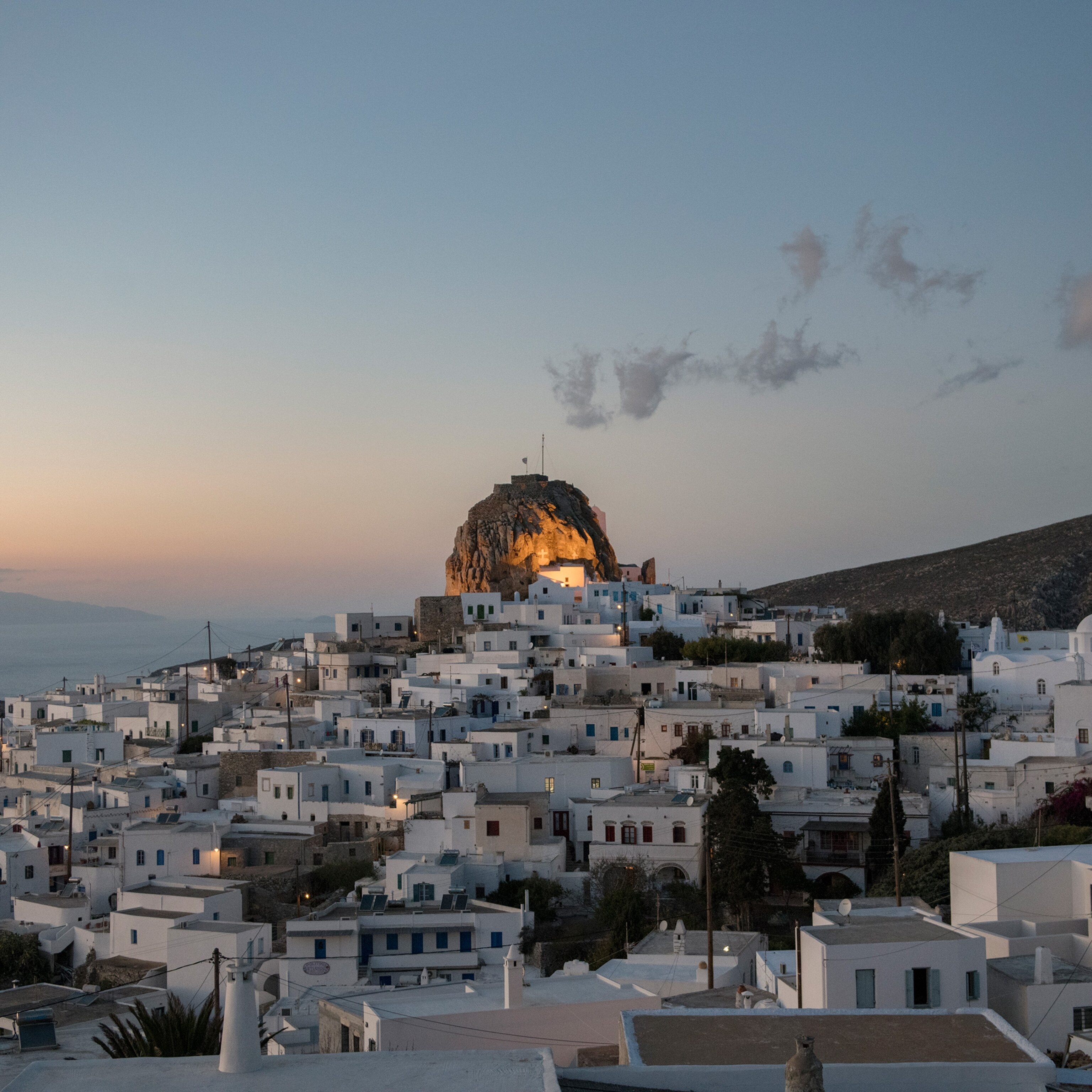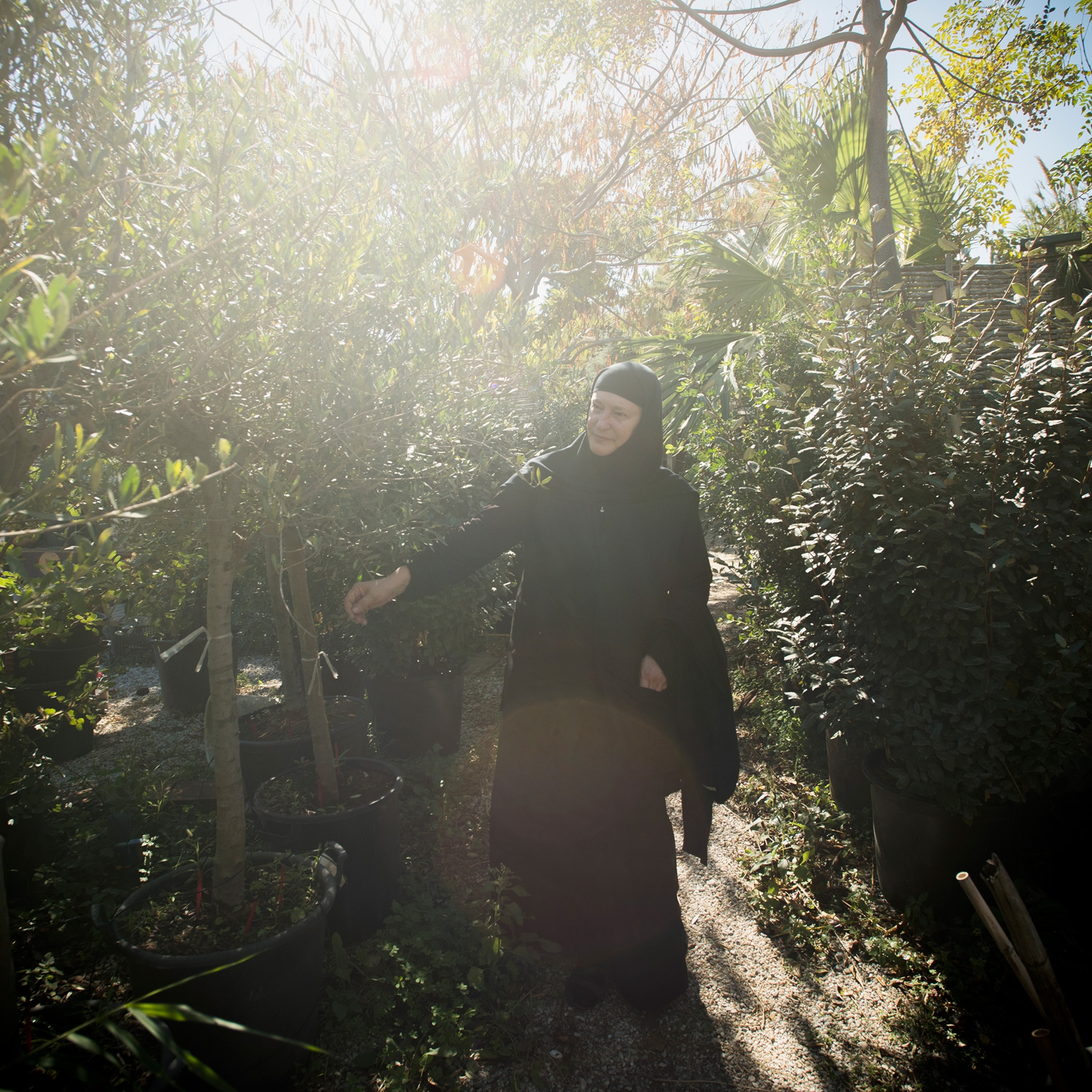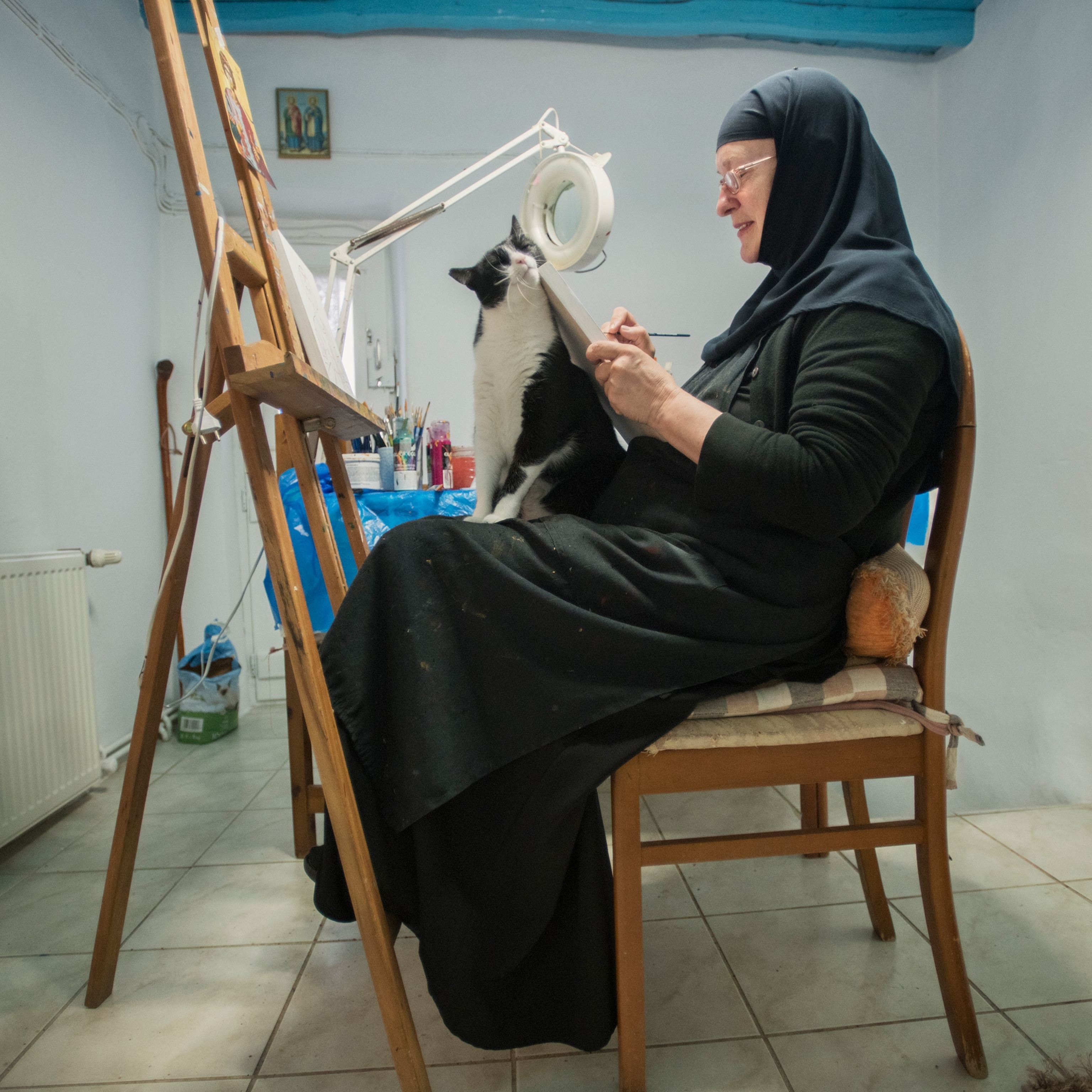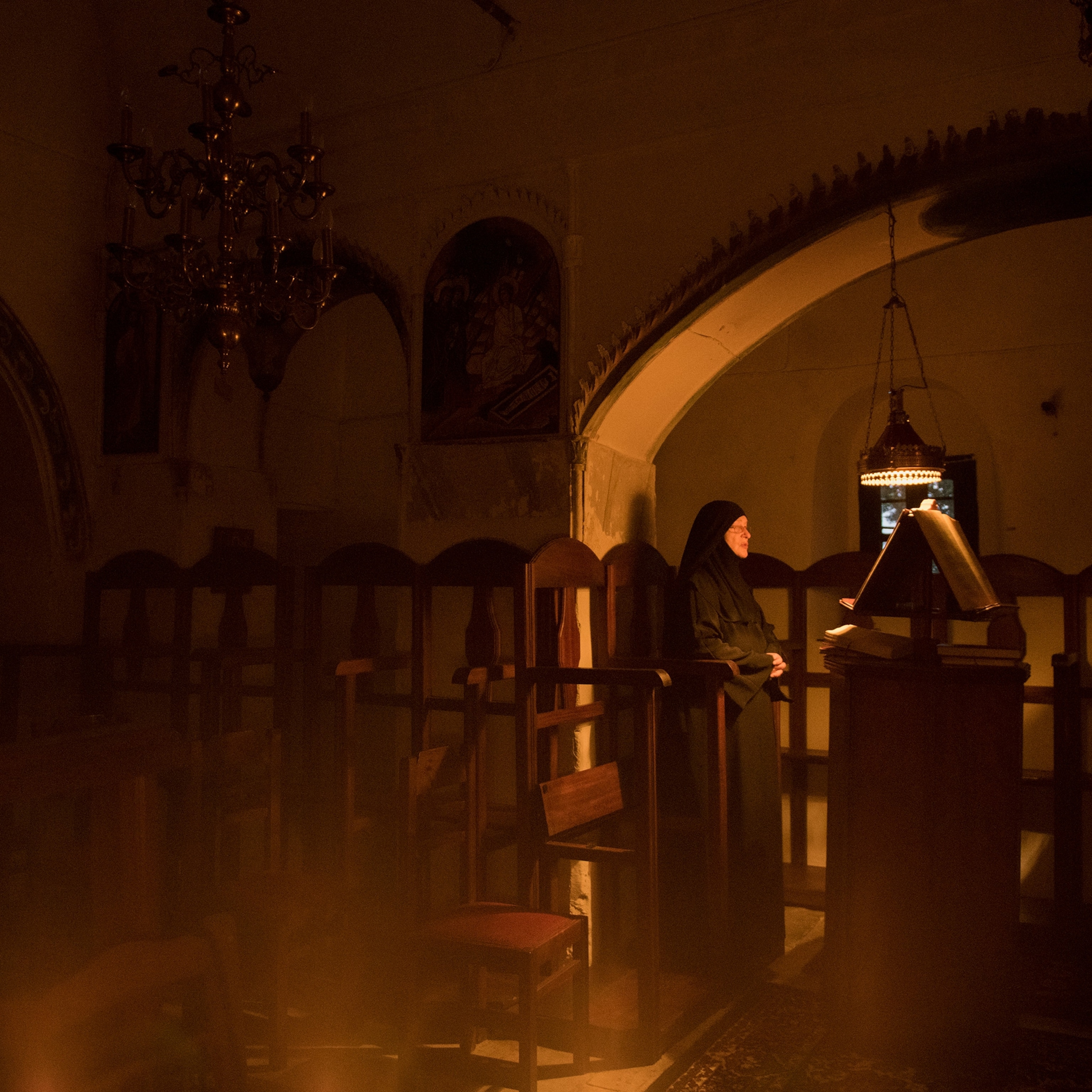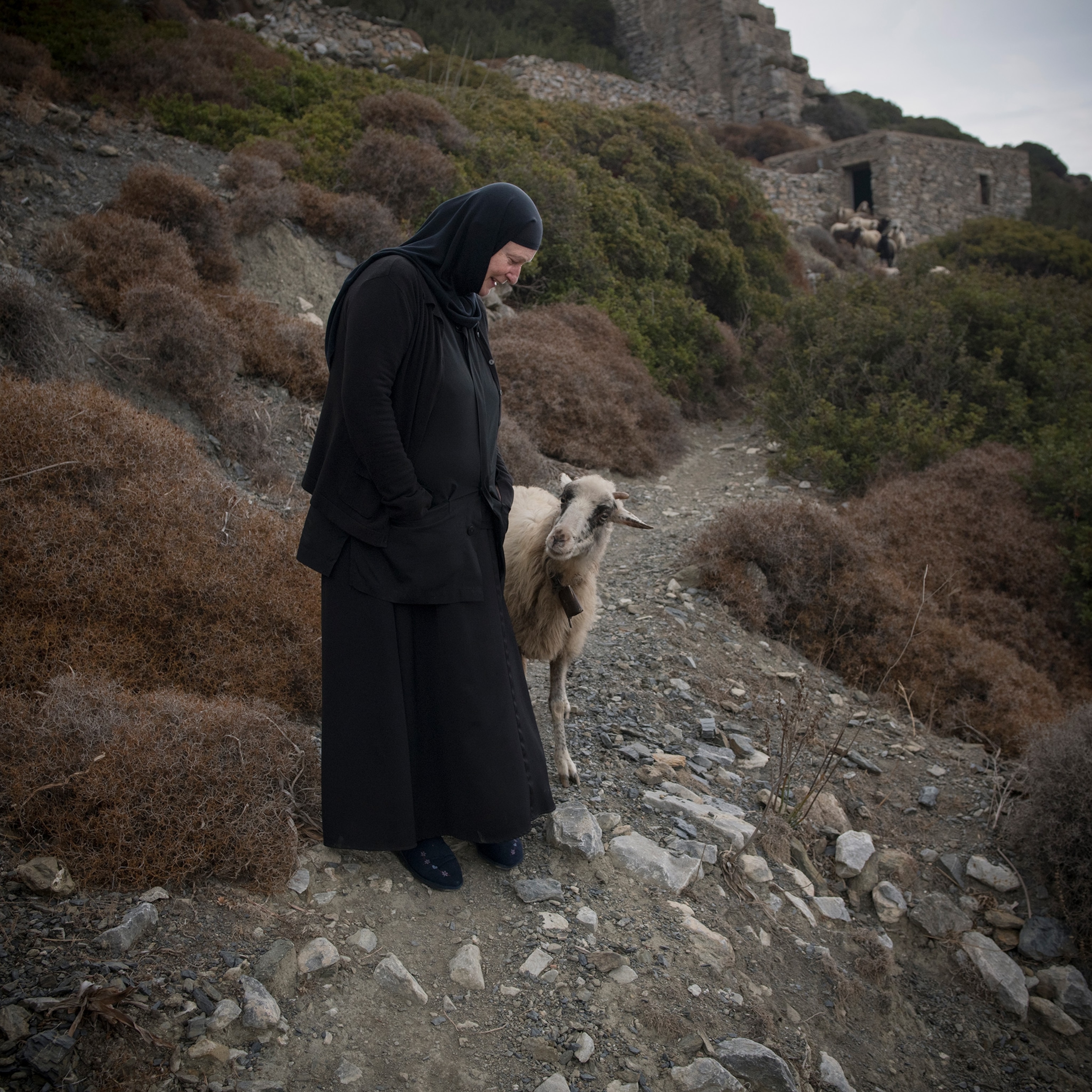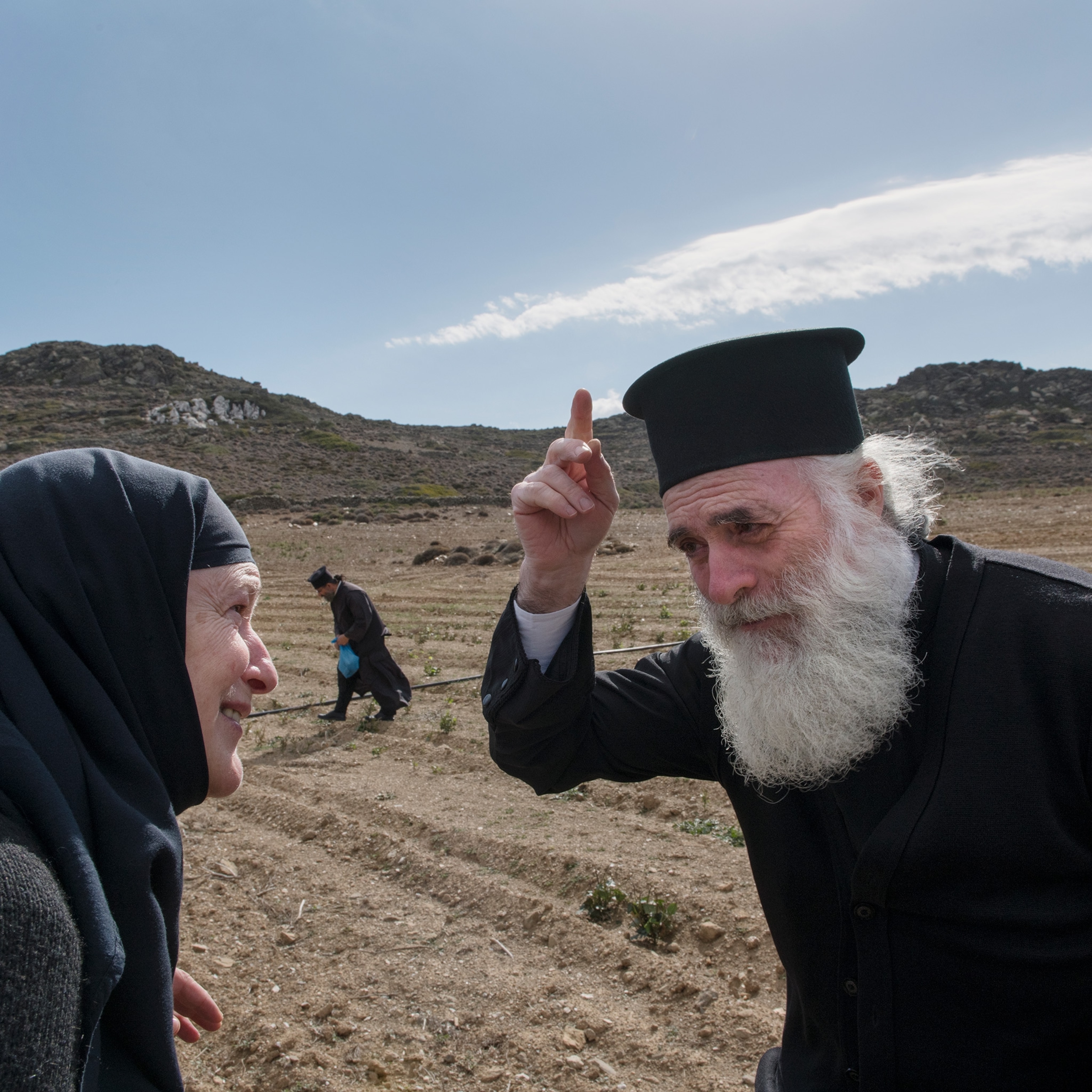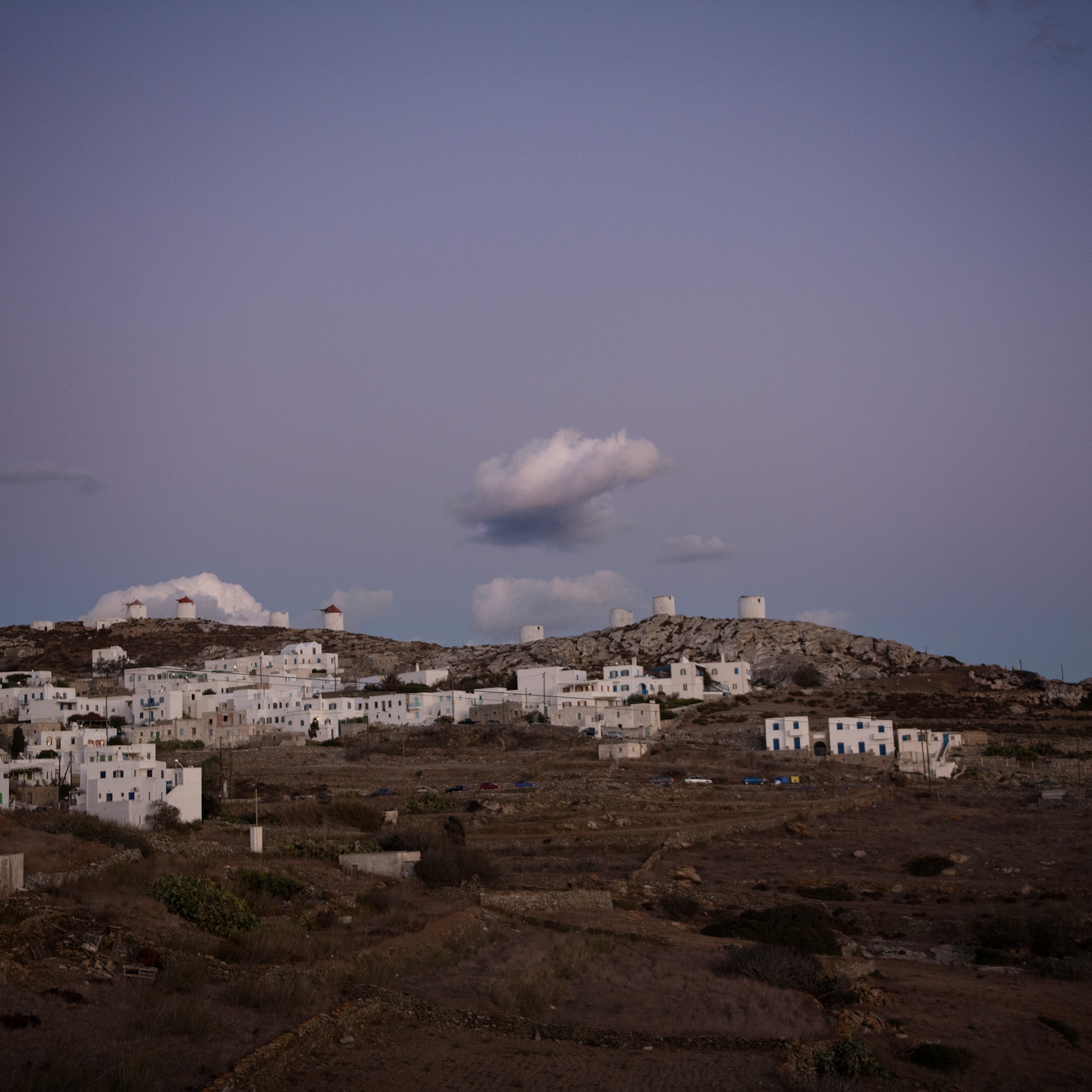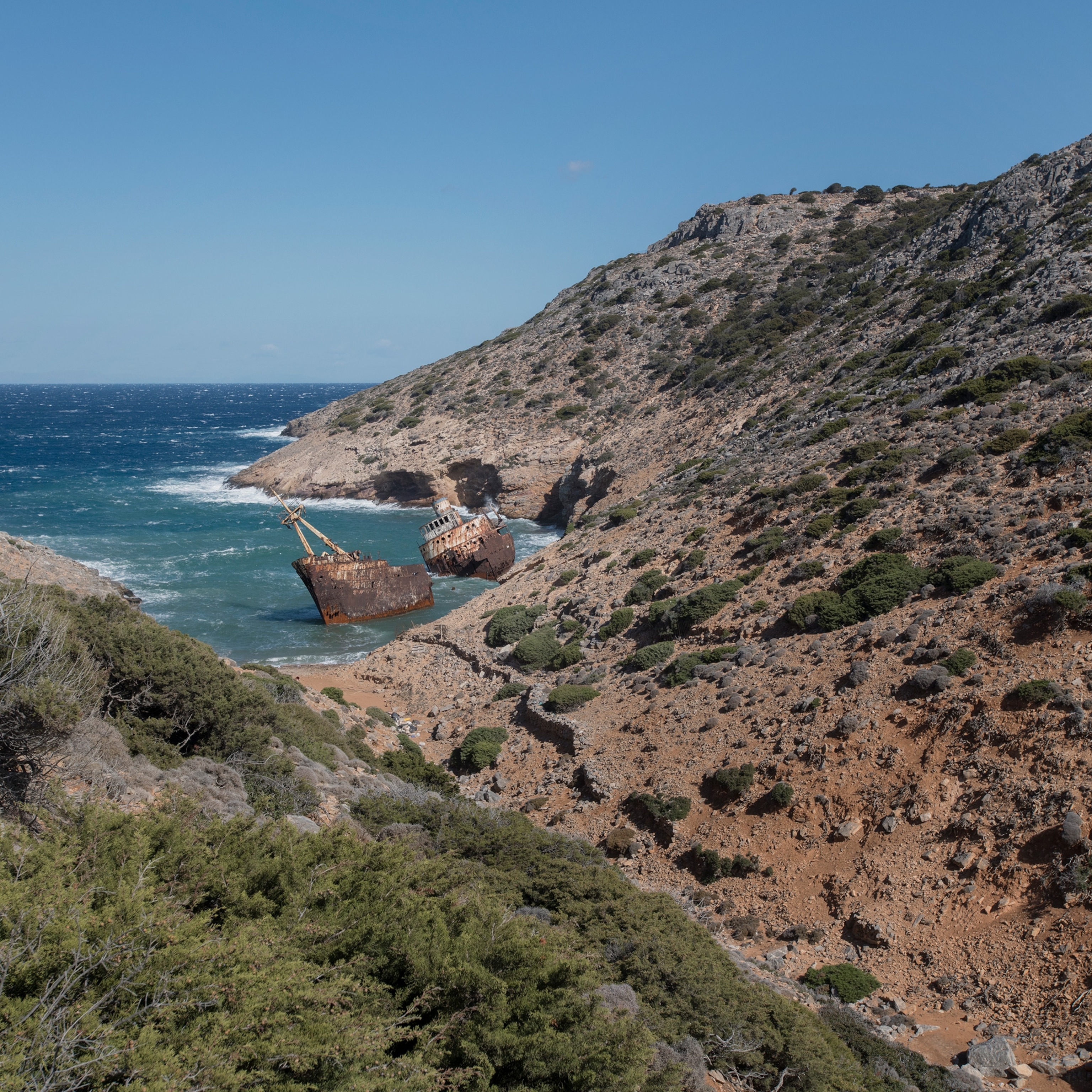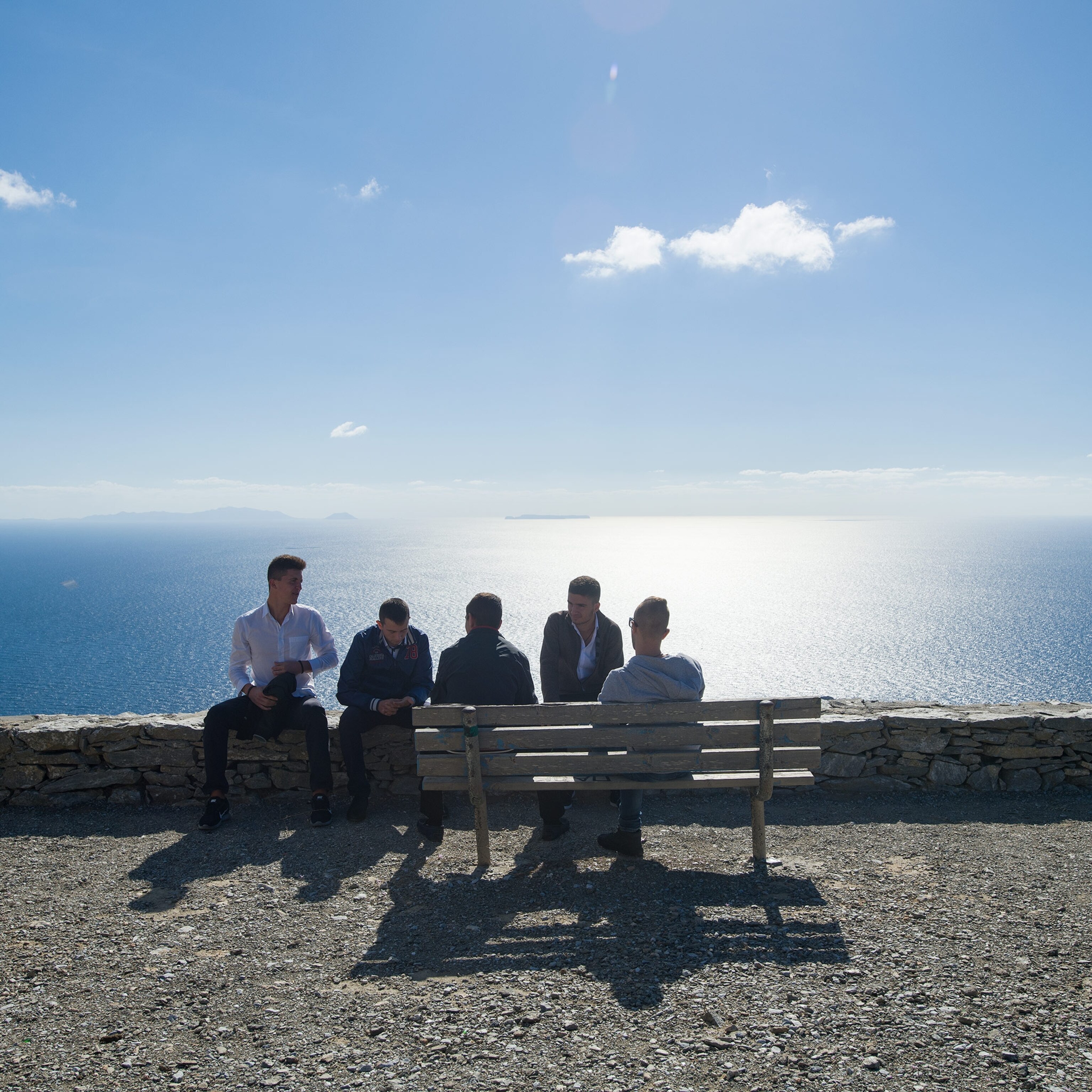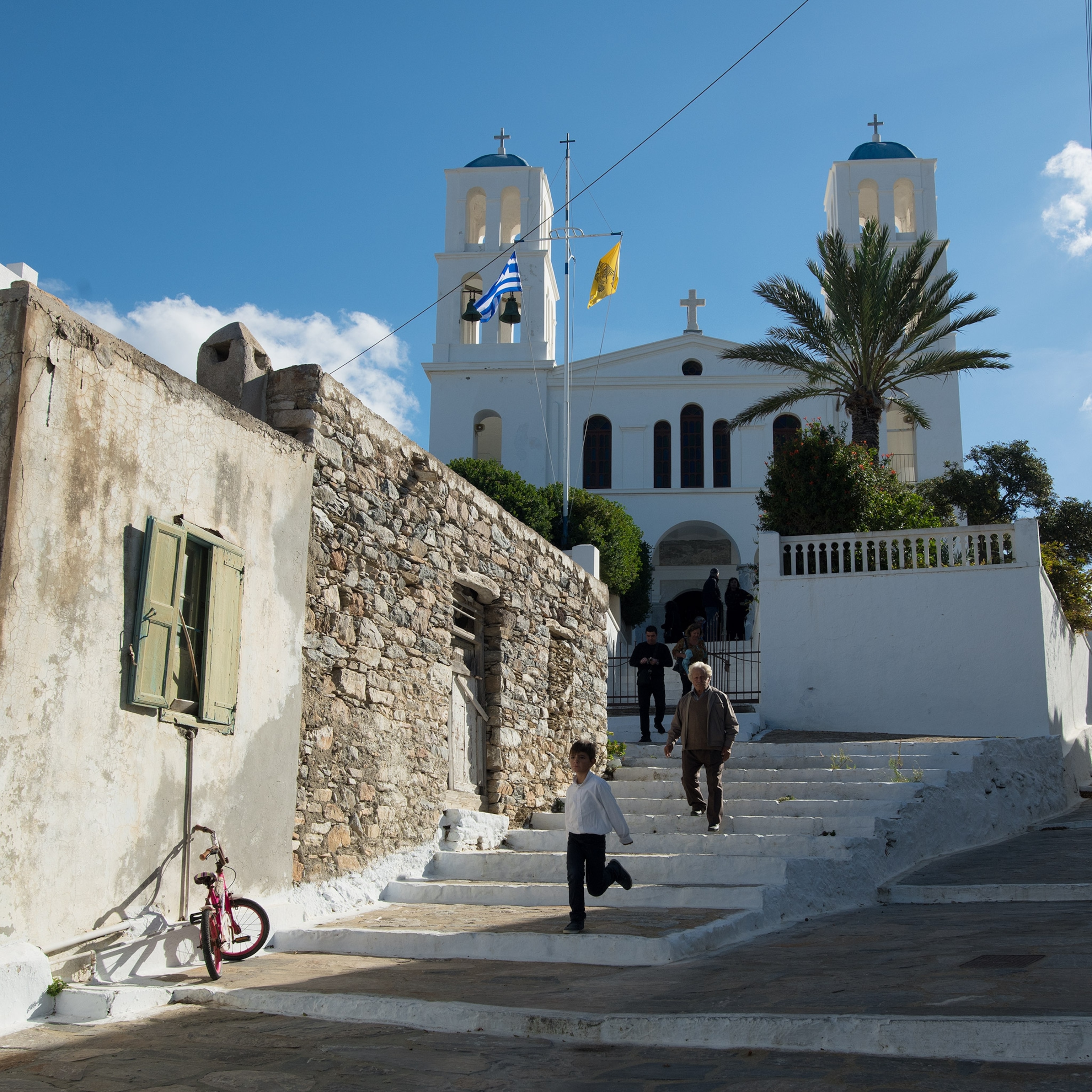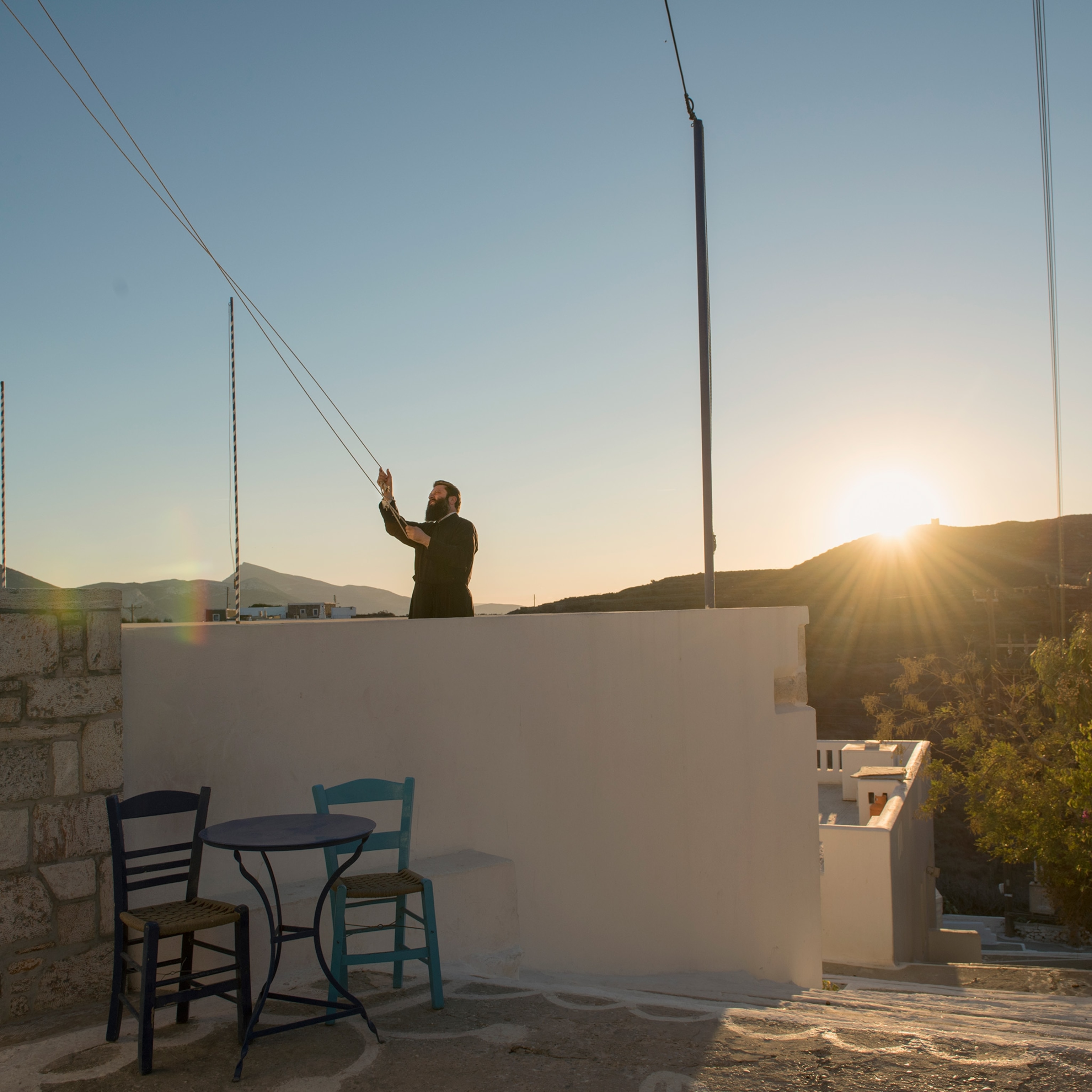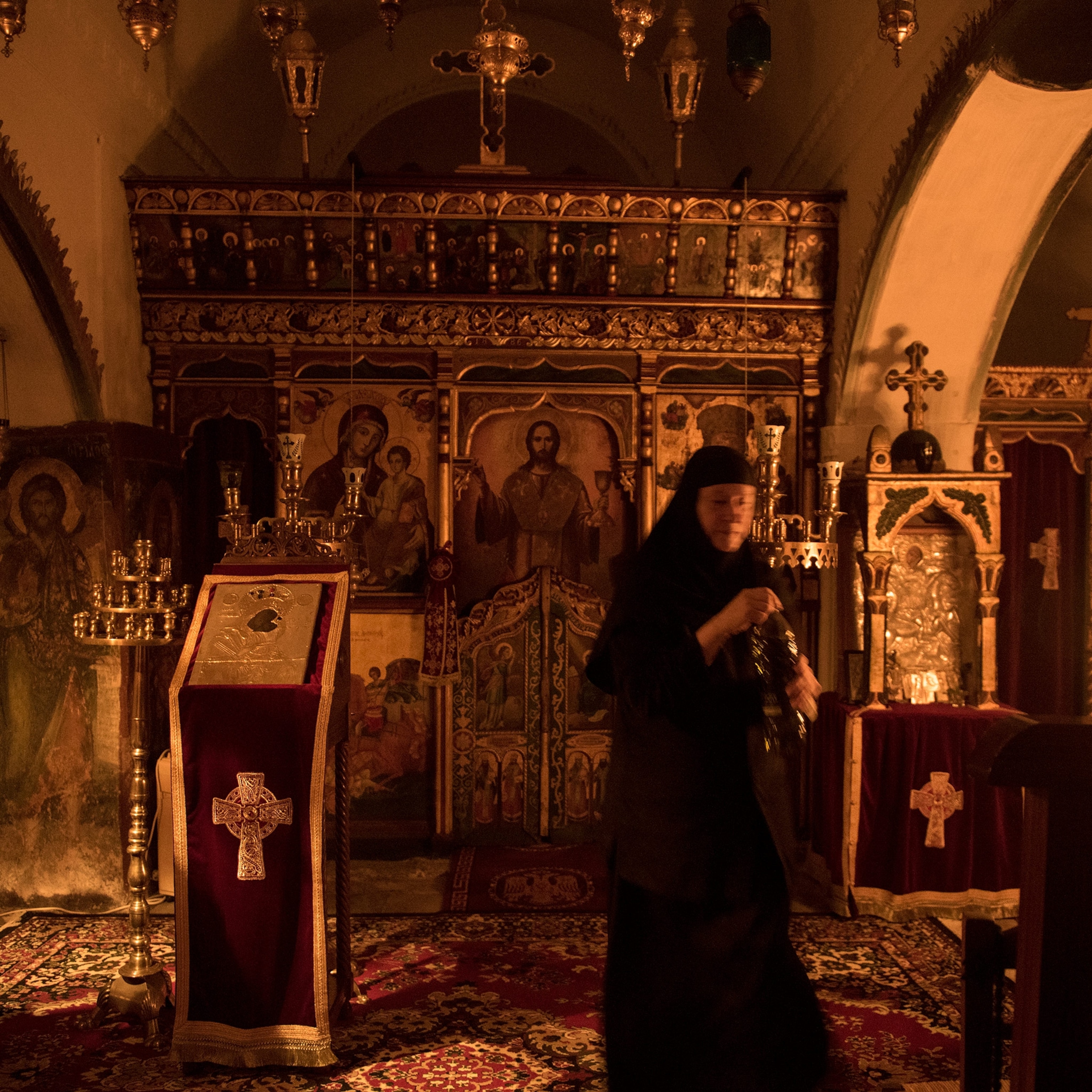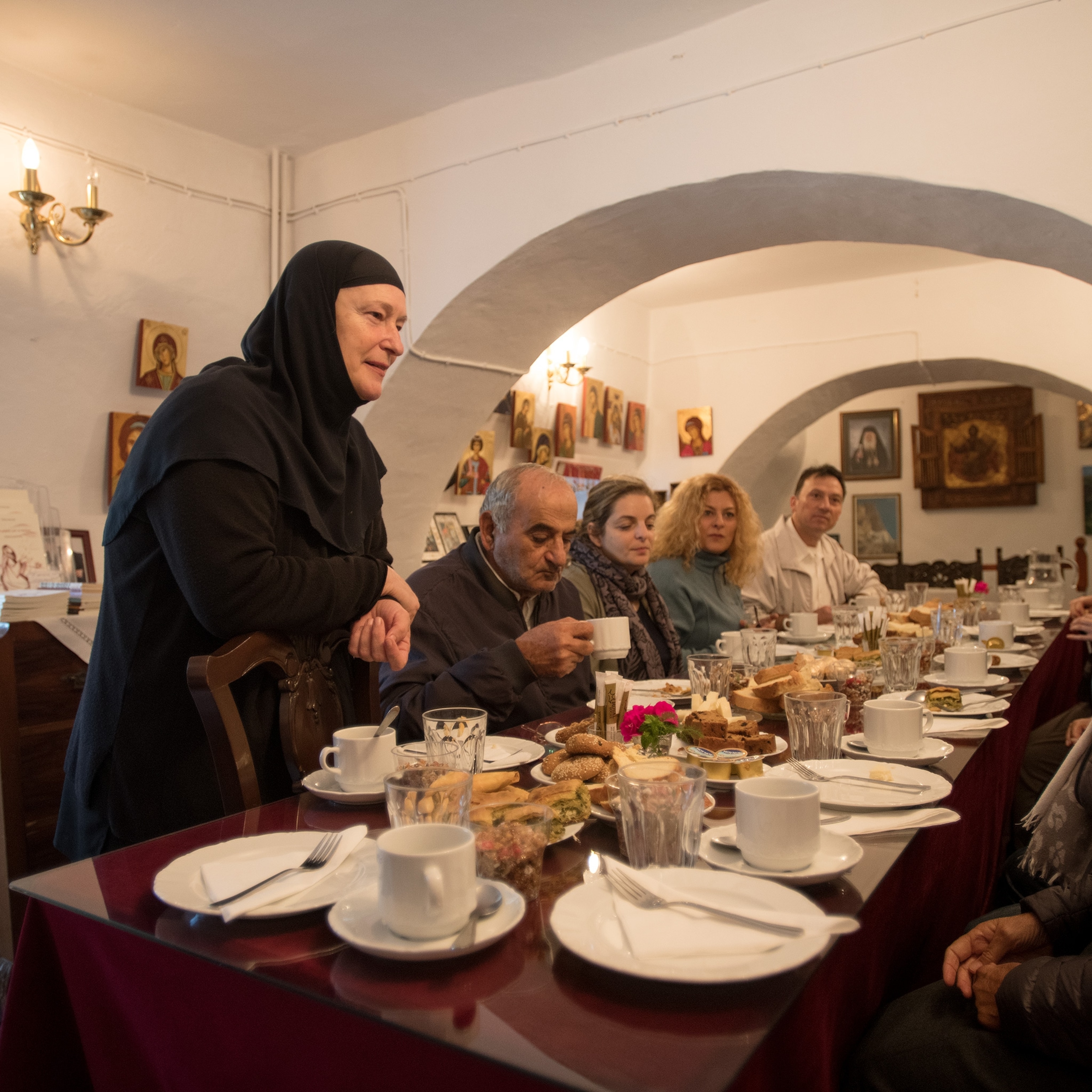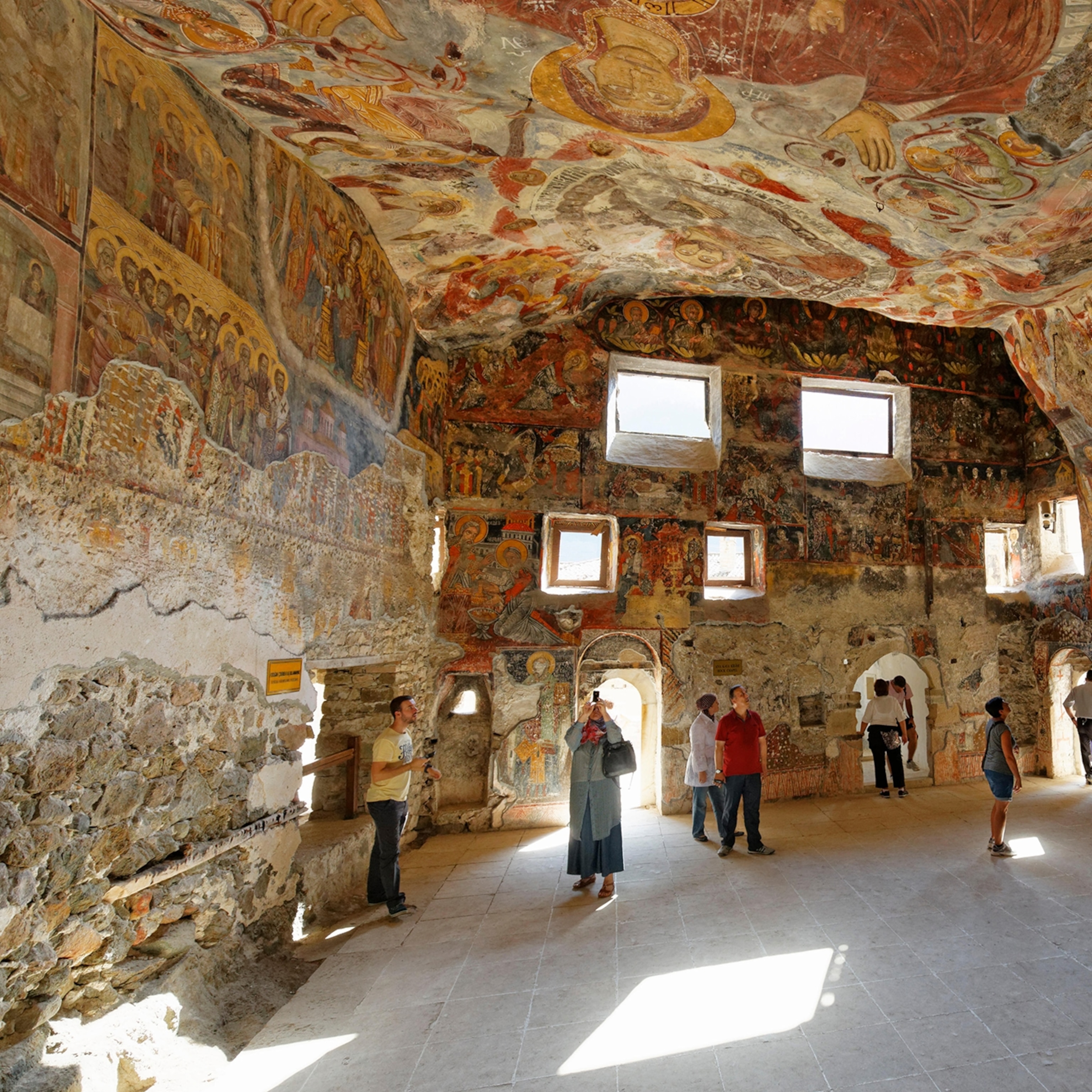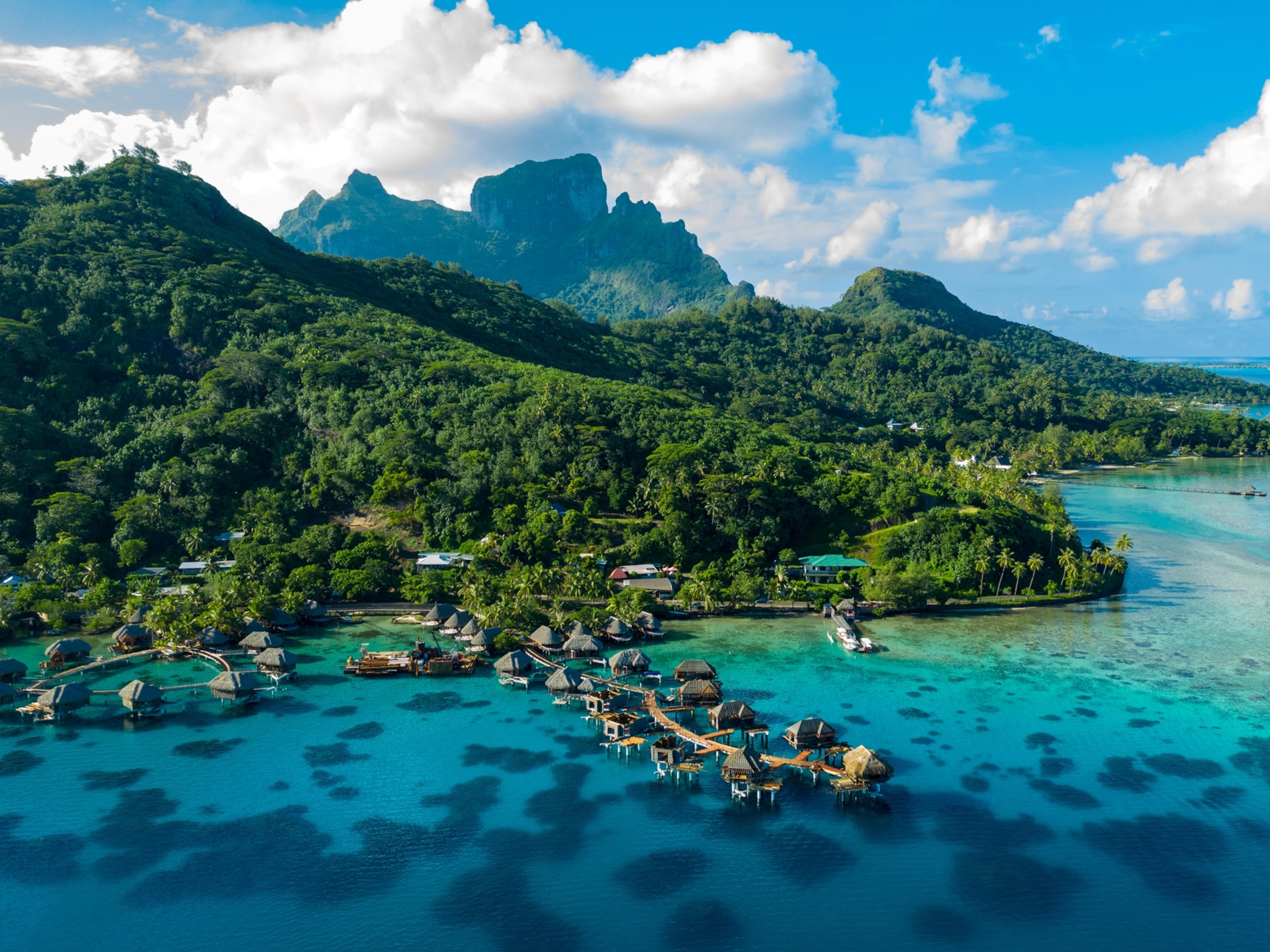She arrived a tourist. The island’s beauty inspired her to become its sole nun.
Decades after her first visit, Sister Irini returned to Amorgos to live in an old monastery she restored herself.

It’s 3:30 a.m. when I disembark the ferry in a trance after a 10-hour sail from Athens. The air is soft and warm in Amorgos, a pristine island off the coast of Greece. Wooden fishing boats rock against their moors, lit villages dot the high hills, and a sweet scent of sage laces the morning air. Once the day starts, it’s on to the reason I came here: to look for Sister Irini.
Amorgos's many monasteries, among the oldest in the world, draw tourists by the thousands, mostly from France, Italy, and Greece, and its unparalleled beauty—rough and raw with azure blue seas and sky—cause one to slow down and linger. One tourist has lingered so long she is now a practicing nun.
Seven years ago, Sister Irini began transforming a long-abandoned monastery into an oasis. Visitors come throughout the year to walk her bountiful garden lined with Byzantine frescos, to hear her story, and to purchase her magnificent paintings of religious icons. She first came to the island as a young mother and wife 35 years ago; after her husband passed, she chose a new path. Her name is Sister Irini, now, and she remains Amorgos’s only nun.
Cloaked in a black habit, she welcomes me on a tour of her home, expressing her love for faith, her garden, and life as a nun. Later, when I ask about her prior name and life, she withholds.
“Last names don’t exist as a nun.” Sister Irini takes a long pause. “I had to divorce myself from my brothers and sisters. I waited until my children were independent.”
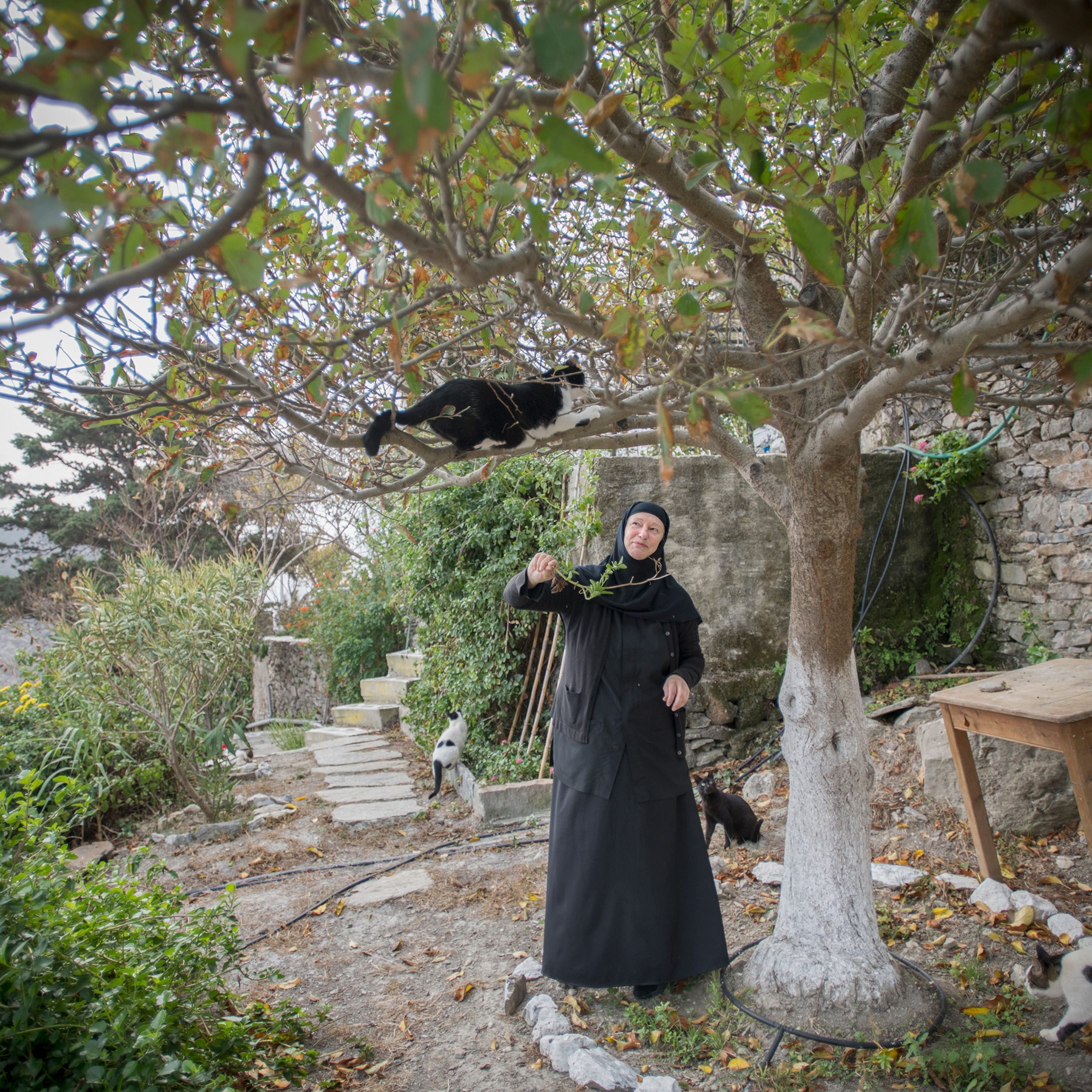
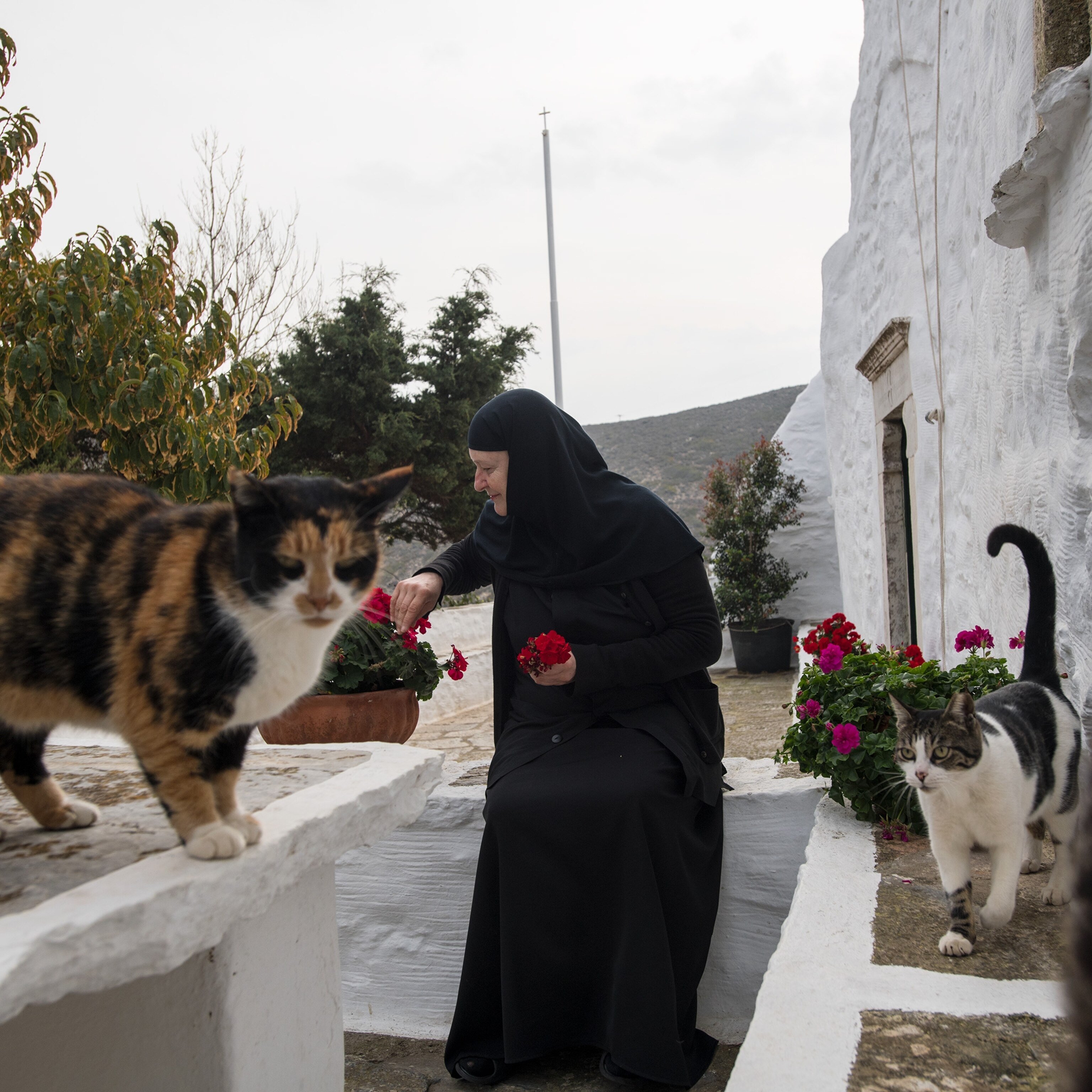
Sister Irini moved to Amorgos and took her vows as a Greek Orthodox nun in 2011. She spends her days gardening, painting, and praying, but always welcomes visitors to her monastery, Agios Georgios Valsamitis (or St. George Valsamitis).
“It was empty and alone, and I had to work hard to make it paradise,” she says. “It really is paradise!”
Valsamitis appears Eden-like after an exhilarating ride up dusty roads, trying to avoid unruly, wandering goats. Its lush shade is a gift in the blistering afternoon sun and the cool landscape: a small miracle. The monastery sits upon an ancient well, previously a water oracle where 17th-century water readers foretold believers’ futures through the blessings of St. George. The Church is opposed to such notions, so the bishop had the well cemented shut in 1967.

Still, the 30 fruit trees that Sister Irini lovingly planted are clearly drinking from the spring. As I stroll under the protective boughs of oranges, lemons, apricots, peaches, and olives, cats lounge amid beds of flowers, stretching and yawning without a care in the world.
“The cats were sick,” says Sister Irini, “but I brought in doctors and now they’re happy.”
Life on Amorgos
It’s not difficult to see what could have first attracted her to a permanent life on Amorgos: It’s a respite from the outer world. Imagine leaving everything behind for a place where the sun-lit sea of diamonds shines by day and sailboats clink beneath a starlit sky at night.
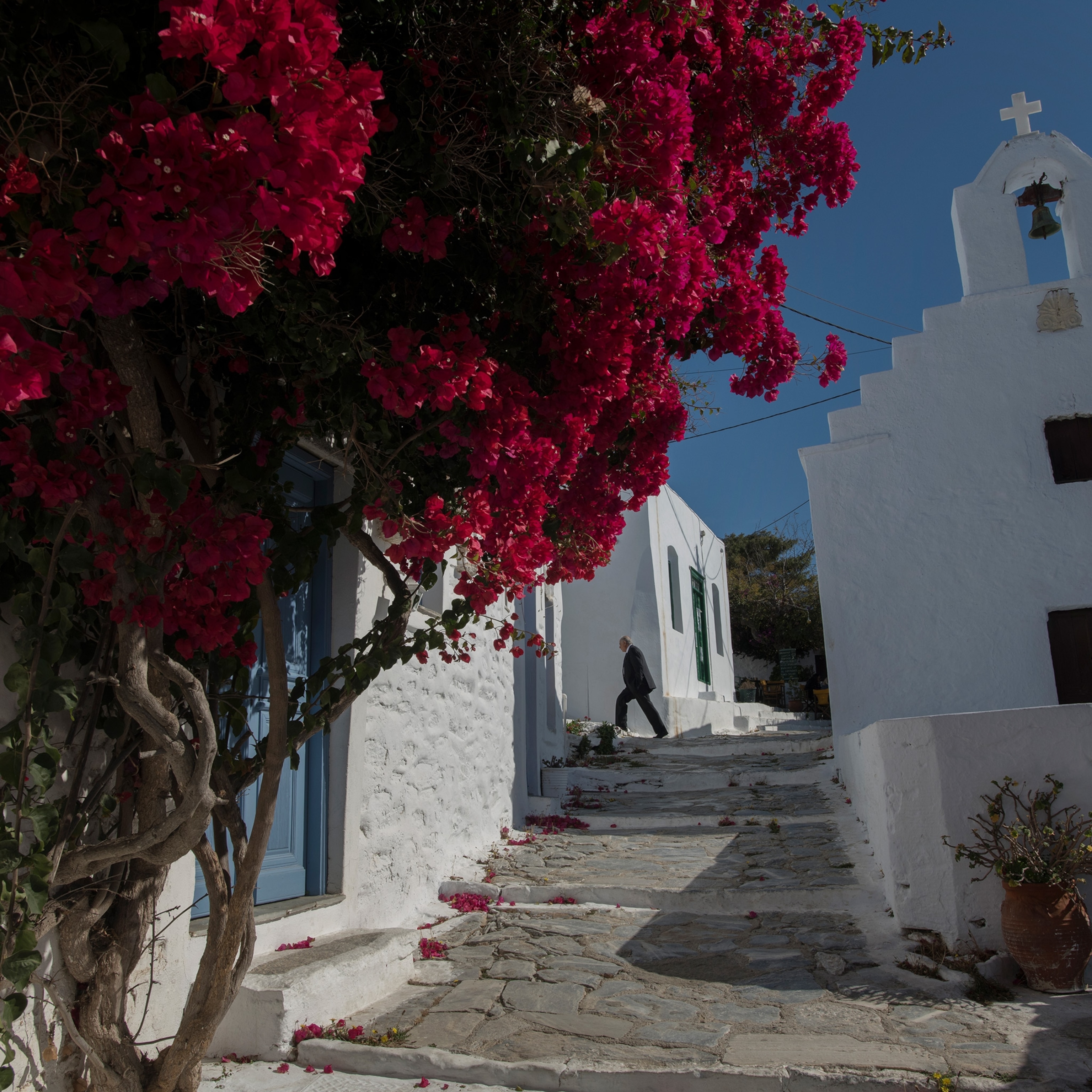
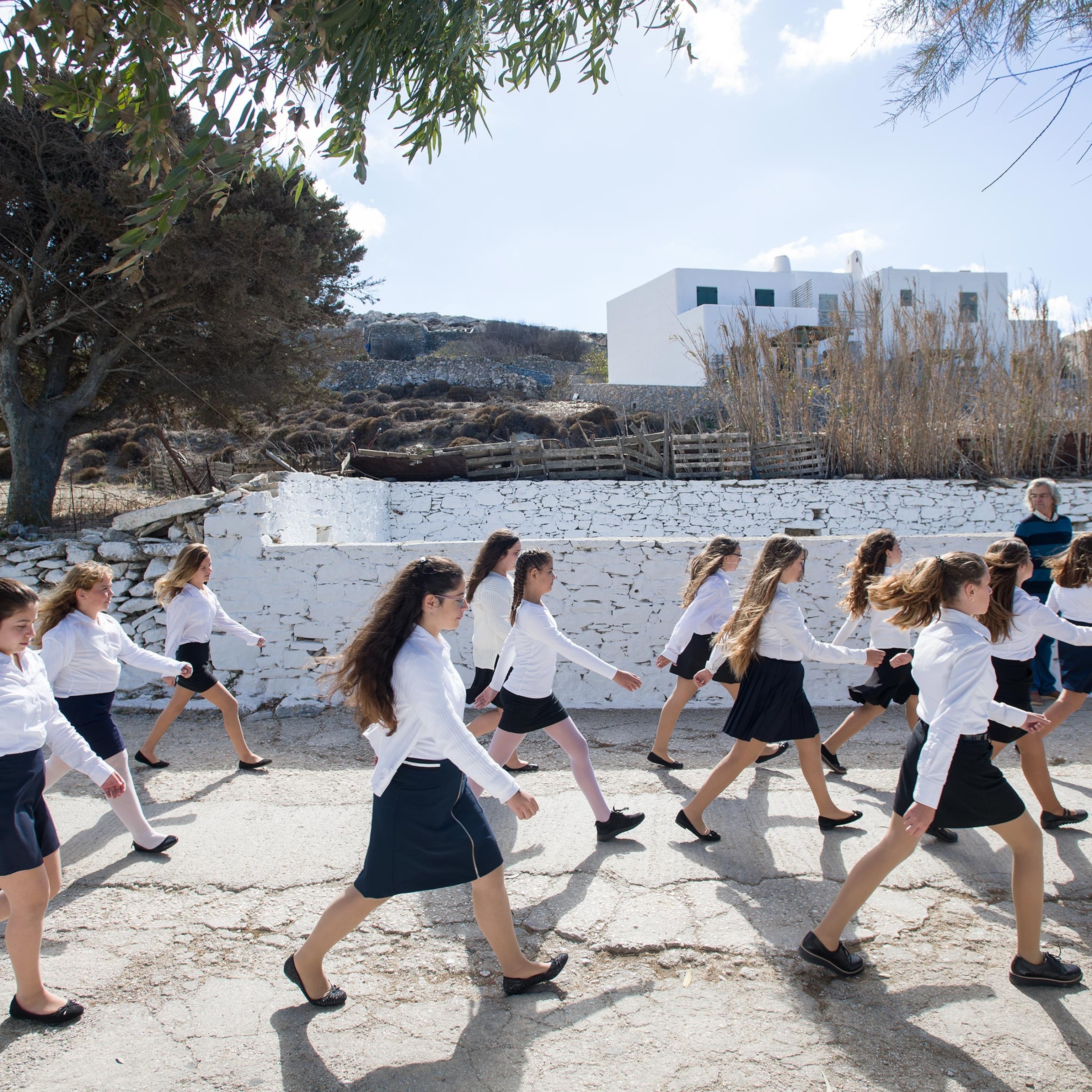
With only two Motto machines (ATMs) that are often devoid of money, the thousand or so year-round residents simply barter among themselves. Homegrown or fresh-caught food is served alfresco and prepared on the spot, albeit leisurely. Everything in Amorgos moves slower, but it’s worth the wait. Rich coffee brews in copper pots on heated sand. Piping hot baskets of sardines are served with feta cheese—crispy, salted, or chilled—alongside morning-picked tomatoes and olives with warm baked bread.
The food tastes of the sea. Unlike Sister Irini’s monastery, most of the island is dry and craggy. I hike two hours on traditional footpaths, lined by ancient stone walls, to the villages of Tholaria, Langkada, and Aegiali to visit the island’s other monasteries—a trek others make in reverse every week to visit Sister Irini in the village of Chora.
“Every Saturday the priests come and share eggs and we hug and talk,” says Sister Irini. “It’s one of my favorite things.”
The Greek Orthodox priests reside in the island’s more famed monastery. Established by Byzantine emperor Alexius Comnenus in the late 11th century, Hozoviotissa perches high on a cliff. It’s rumored the Louvre has tried to acquire it for years. Gems, jewels, and gold adorn the altar; Rolexes, emeralds, and diamonds gleam in locked glass cabinets, gifts left by spiritually inspired tourists from around the world.
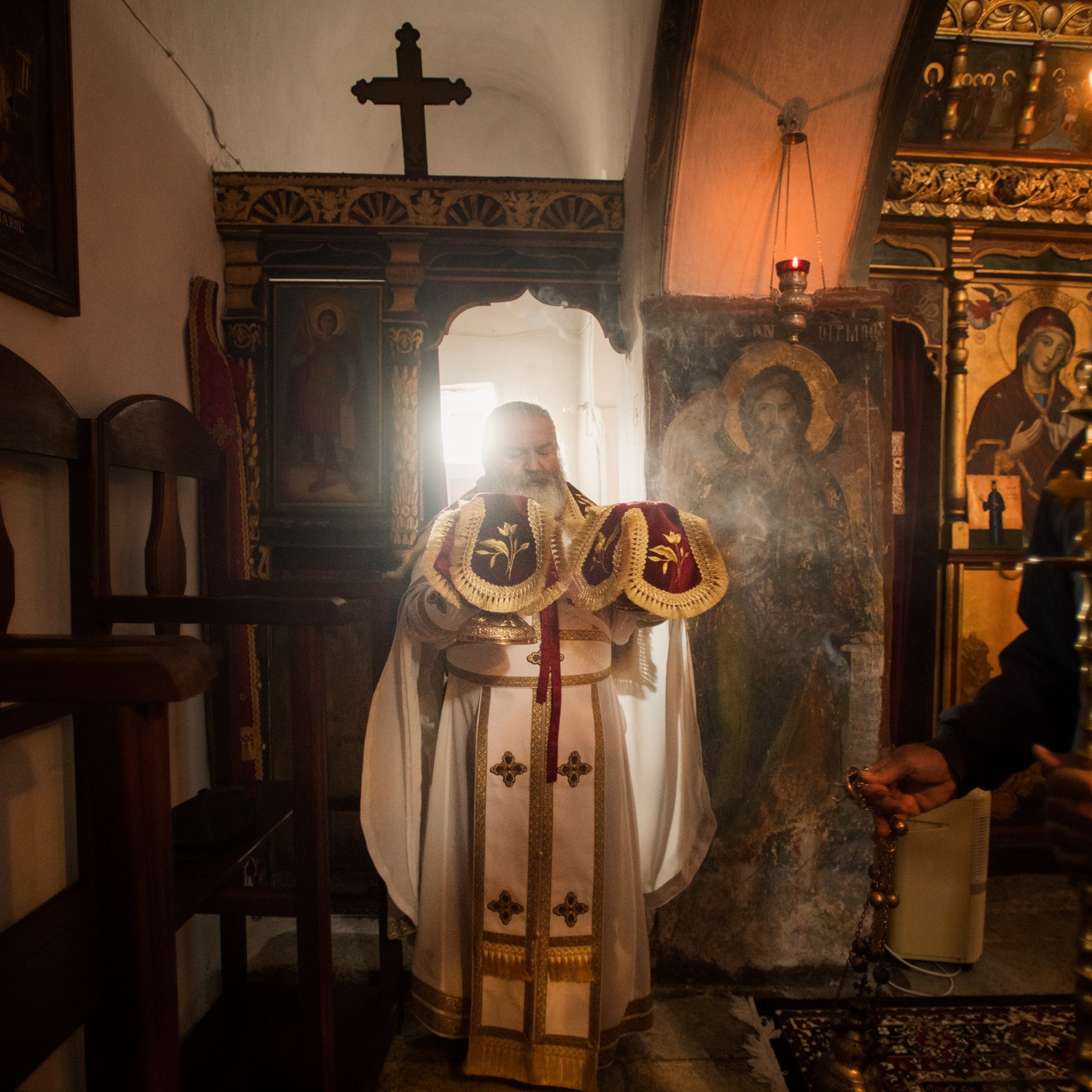
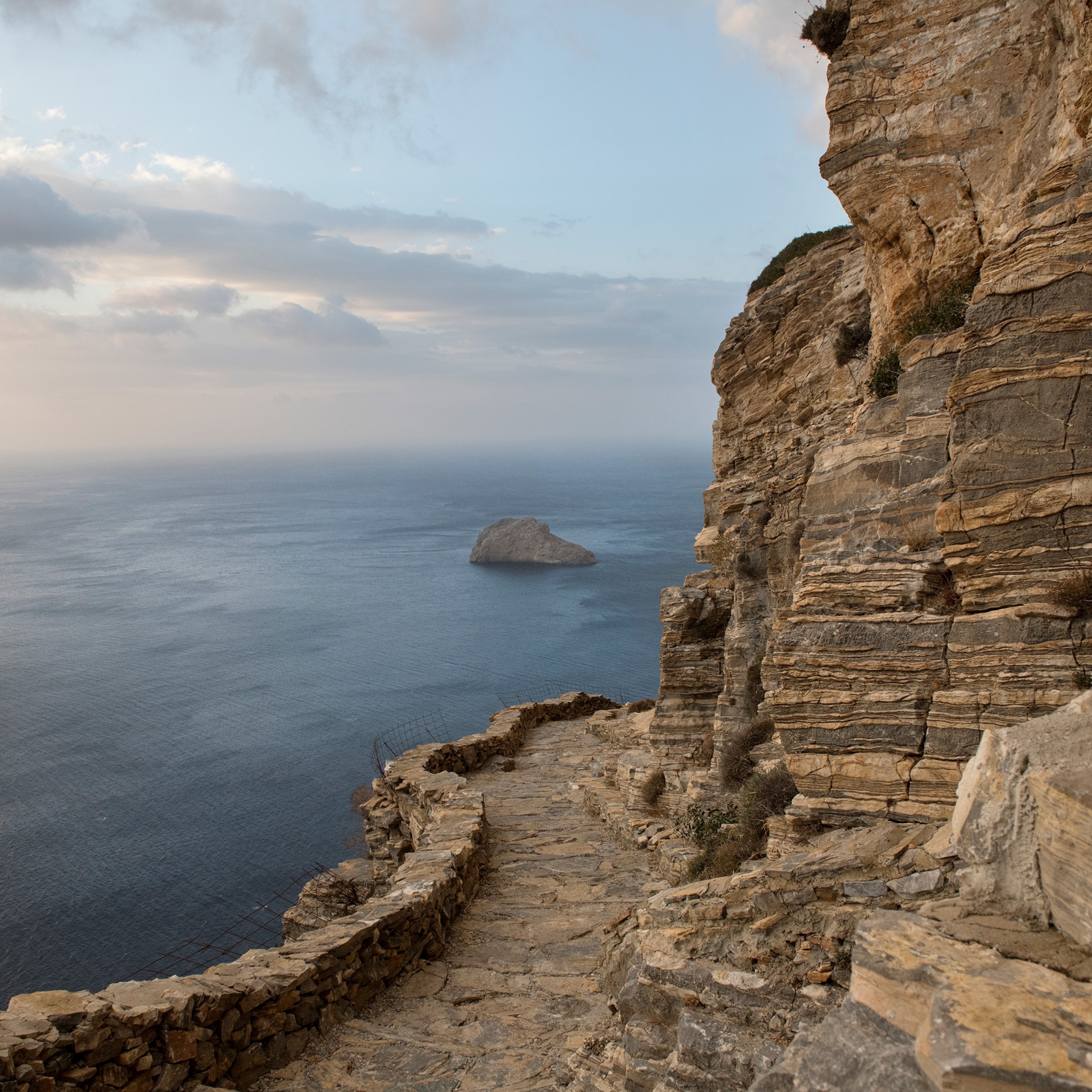

As magnificent as these lavish gifts may appear, this monastery’s finest blessing may be its unparalleled views of the famous blue cove of Aghia Anna. After a leisurely hour’s hike downhill, I wade through the shallow water into a cool cave, allowing the salty sea to cleanse the day’s heat.
In a landscape this heavenly, it’s easy to understand Sister Irini’s choice to devote herself to a simple, holy life.
“The quiet, sunrise, sunset—everything!” she says. “I love everything.”
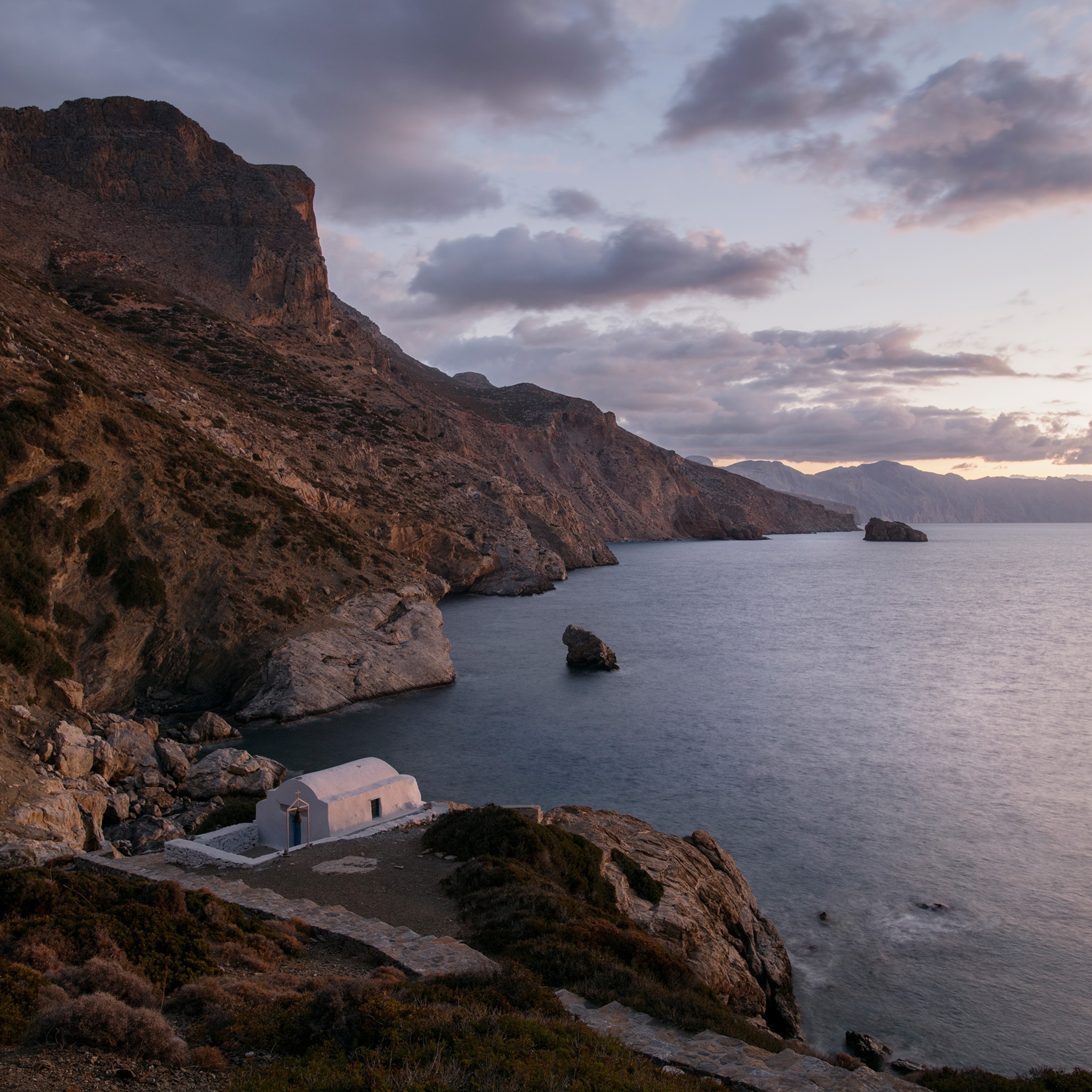
Know before you go
After landing in Athens, visitors can take the 5:30 p.m. ferry from the Port of Piraeus for the 10-hour sail to Amorgos, where cars are available to rent and can be arranged by your hotel. Lodging varies from five-star hotels to simple bed-and-breakfasts.
Must-see stops include Hozoviotissa Monastery, open from 8:30 a.m. to 2:00 p.m. and then again from five to seven (make sure to check the dress code); Aghia Anna, where classic film Le Grande Bleu was shot (avoid midday crowds); and Sister Irini’s own St. George Valsamitis. Sister Irini welcomes tours, which can be arranged by your hotel or online through multiple tour companies.
